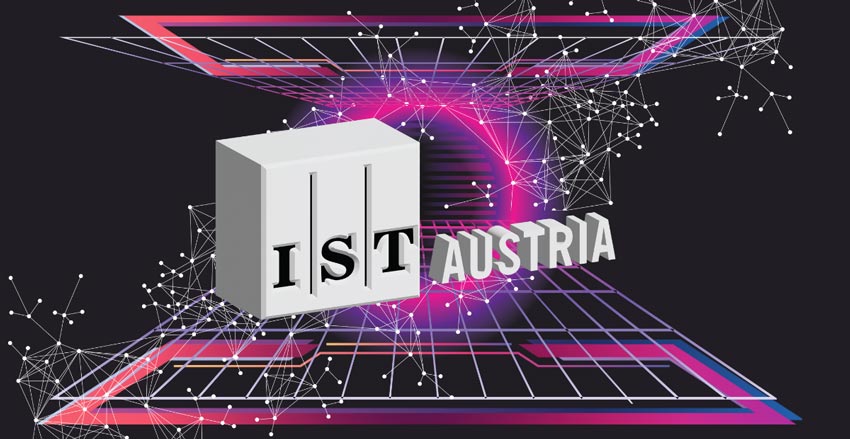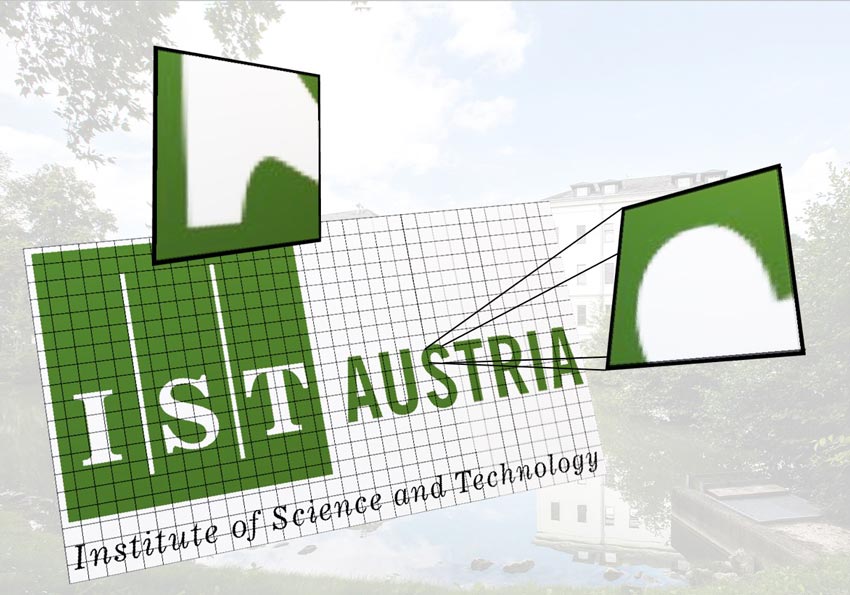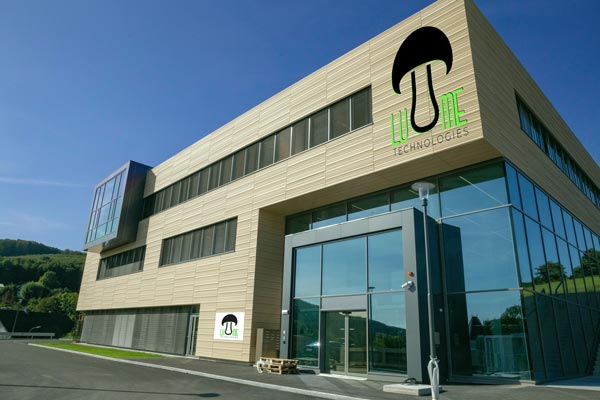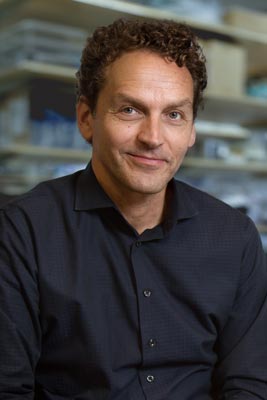April 1, 2022
ISTA Sells Logo as NFT
10 million euros for Austrian basic research in the metaverse

Once again, the Institute of Science and Technology Austria (ISTA) has raised millions for science. The long-serving logo “IST Austria” has now been successfully sold as a non-fungible token (NFT). NFTs are unique digital representations of digital or physical objects on the blockchain. The money raised finances the digitization of basic scientific research, marking the Institute’s rocket launch into the metaverse.
Last Tuesday the Institute of Science and Technology Austria (ISTA) became the first research institute worldwide to sell its former logo “IST Austria” as a non-fungible token (NFT). The trademark of the world class research institution was not auctioned as a single digital object, but in the form of 966 pieces at 10,000 euros each. The total amount of 9.66 million euros was reached within a few minutes by many international buyers. “We chose this fragmentation because all of our 966 employees on campus are part of our unique identity,” explains Managing Director Georg Schneider, “and I wish there had been more!”
The inspiration came from the Vienna Belvedere Museum, which shared Gustav Klimt’s masterpiece “The Kiss” in 10,000 mini-NFTs for this year’s Valentine’s Day and generated millions. “From a pandemic point of view, we are sick of kissing,” clarifies ISTA President Thomas Henzinger. “After 15 successful years, we wanted to give back to the science community.”

Carbon footprint and circular branding
There was some skepticism after the announcement on Twitter, even from climate icon Greta Thunberg, but everything had been preempted. “At its core, it’s a measure of sustainability: How do you recycle an old logo?” asks Michael Sixt, executive vice president in charge of service facilities at the campus. “What has been achieved here is a beacon of innovation and we call it circular branding.” In-house expertise was used to conserve resources: The utilized blockchain is based on the climate-friendly protocol of cryptography professor Krzysztof Pietrzak, and the energy for the servers is provided by IST Park’s green energy start-up Lume Technologies.

The optimal aesthetic segmentation of the logo into 966 parts was provided by Professor Uli Wagner with the help of his simplicial complexes; further optimization was achieved by computer scientist Marco Mondelli, who applied the highly trained neural networks of his doctoral students. “I am very grateful to the Institute that the enormous climate footprint of all NFT transactions could be massively reduced,” climate scientist Caroline Muller appreciates the technical implementation. The ISTA Sustainability group was able to compensate for the remaining emissions with a single raised bed.
The journey ahead: ISTA laboratories in the metaverse
“We´re entering the digital age of basic science research!”, cheers Bernd Bickel, Vice President for Technology Transfer, at the launch of nothing less than a groundbreaking digitization strategy. Soon, his and Chris Wojtan’s visual computing groups will digitize the Institute’s management into avatars. In particular, the fine-curled, highly complex hairstyle of the new president, Martin Hetzer, who will start in 2023, is currently the subject of intensive research. In the next step, the hundreds of scientists at the Institute will be processed into digital clones. They will be ranked according to a metric of citations and cognitive abilities, which will be evaluated by the Robinson group using genetic analysis of blood samples from all the researchers. Virtual flesh and blood are provided by Anđela Šarić with her computational living matter.

The entire campus, including laboratories, library, and cafeteria, will be set up as a virtual copy in the metaverse, where new professor Lefteris Kokoris-Kogias, at the same time scientist at Facebook Research, was able to negotiate a good deal. To favor settlement, all avatars will have a digital gene called Atossa inserted to provide higher processor power for migration to the new buildings. Nothing will then stand in the way of barrier-free access, especially for dialogue with science-hostile anti-vaxxer trolls – except for a Windows update.
“Open access is a big concern for us,” emphasize both librarian Patrick Danowski and Vice President for Science Education Gaia Novarino. “Starting 2023, ISTA won’t have a single book or analog event. From Open Campus Day to job interviews, everyone is welcome at DigitISTA!” Regarding the application process, Eva Benková, Dean of the Graduate School, announces, “If everything goes as planned, we will be able to welcome the first truly digital natives as students to DigitISTA as early as September 2022 and fully transition next year.”

Natural laws as birthday presents
Outsourcing also research to the digital world has so far been considered controversial. “Together with colleague Tamás Hausel, the two of us formed a Higgs bundle and were able to topologically extend virtual space-time in such a way that all real laws of nature also exist in the metaverse,” asserts mathematical physicist Herbert Edelsbrunner. However, for the quantum phenomena to resemble the ones in nature, programs for the metaverse must run on so-called quantum computers. The three groups of Johannes Fink, Georgios Katsaros, and Andrew Higginbotham are working simultaneously both day and night – in what is known as a research superposition – to develop the new technology. “If we succeed in simulating reality with sufficient accuracy, new formulas and theories could be derived from the digital world,” explains Robert Seiringer, chairman of the mathematics and physics departments.
Initial test runs promise breakthroughs: at the virtual billiard table of the Institute’s bar, physicist Vadim Kaloshin has found a differential geometric equation that was previously unknown. The formula is also sold as an NFT. “With this, endless lucrative potential arises: imagine giving your beloved the theory of gravity as a wedding present someday, or the theory of evolution,” envisions Markus Wanko, founder and managing director of the venture capital fund IST cube. The legal department is currently examining Austrian animal law to see to what extent Schrödinger’s cat and Pavlov’s dog can also be monetarized as NFT pets.



